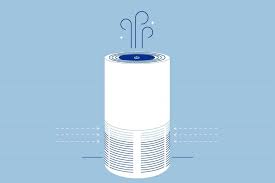What Is Better for Allergies: Humidifier or Air Purifier?
Allergies affect millions of people worldwide, with symptoms like sneezing, congestion, itchy eyes, and respiratory discomfort. Many turn to humidifiers and air purifiers for relief—but which one is more effective? This in-depth guide compares humidifiers and air purifiers for allergy relief, helping you decide which device (or combination) is best for your needs.

Introduction
Allergies affect millions of people worldwide, with symptoms like sneezing, congestion, itchy eyes, and respiratory discomfort. Many turn to humidifiers and air purifiers for relief—but which one is more effective? This in-depth guide compares humidifiers and air purifiers for allergy relief, helping you decide which device (or combination) is best for your needs.
1. Understanding Allergies and Indoor Air Quality
Allergies are often triggered by:
✔ Dust mites
✔ Pollen
✔ Pet dander
✔ Mold spores
✔ Airborne chemicals (VOCs)
Both dry air and polluted air can worsen allergy symptoms, making humidity control and air purification key factors in managing allergies.
2. How Humidifiers Help with Allergies
2.1 What Does a Humidifier Do?
A humidifier adds moisture to dry air, preventing irritation caused by low humidity.
2.2 Benefits for Allergy Sufferers
✔ Reduces dry throat and nasal passages (less irritation)
✔ Helps loosen mucus (easier breathing)
✔ May reduce dust mite survival (they thrive in dry air)
2.3 Limitations
❌ Does not remove allergens (only adds moisture)
❌ Can promote mold growth if overused (must be cleaned regularly)
2.4 Best For:
-
People with dry air-related congestion
-
Those in cold, dry climates
-
Allergy sufferers who also experience dry skin or sinus irritation
3. How Air Purifiers Help with Allergies
3.1 What Does an Air Purifier Do?
An air purifier removes airborne allergens like dust, pollen, pet dander, and mold spores.
3.2 Benefits for Allergy Sufferers
✔ Captures allergens (HEPA filters trap 99.97% of particles)
✔ Reduces pet dander and dust mites
✔ Removes smoke and odors (activated carbon filters)
✔ Helps with asthma and respiratory allergies
3.3 Limitations
❌ Does not add moisture (dry air can still irritate)
❌ Some models produce ozone (avoid ionizers if sensitive)
3.4 Best For:
-
People with pollen, dust, or pet allergies
-
Homes with smoke or chemical sensitivities
-
Those who need allergen removal, not just humidity
4. Humidifier vs. Air Purifier: Direct Comparison
| Feature | Humidifier | Air Purifier |
|---|---|---|
| Primary Function | Adds moisture | Removes allergens |
| Best for Allergy Relief? | Dry air symptoms | Pollen, dust, dander |
| Maintenance | Needs frequent cleaning | Filter replacements |
| Health Risks if Misused | Mold growth | Ozone (some models) |
| Best Used With | Air purifier (combo) | Humidifier (if air is dry) |
5. Which One Should You Choose?
5.1 Choose a Humidifier If:
-
You suffer from dry nose, throat, or skin due to low humidity.
-
Your allergies worsen in winter or dry climates.
-
You need sinus congestion relief.
5.2 Choose an Air Purifier If:
-
You react to dust, pollen, or pet dander.
-
You have asthma or severe respiratory allergies.
-
You live in a polluted or smoky environment.
5.3 Best Solution: Use Both!
-
A humidifier keeps airways moist.
-
An air purifier removes allergens.
-
Place them separately to avoid filter damage from moisture.
6. Common Myths Debunked
❌ Myth: "Humidifiers clean the air."
✅ Fact: They only add moisture—no allergen removal.
❌ Myth: "Air purifiers increase humidity."
✅ Fact: They do not add moisture to the air.
❌ Myth: "You don’t need both."
✅ Fact: Combining them provides the best allergy relief.
7. Conclusion
For allergy relief, air purifiers are generally more effective because they remove allergens from the air. However, if dry air worsens your symptoms, a humidifier can provide additional comfort. The best solution for severe allergies is using both devices to maintain clean, moisturized air.

























